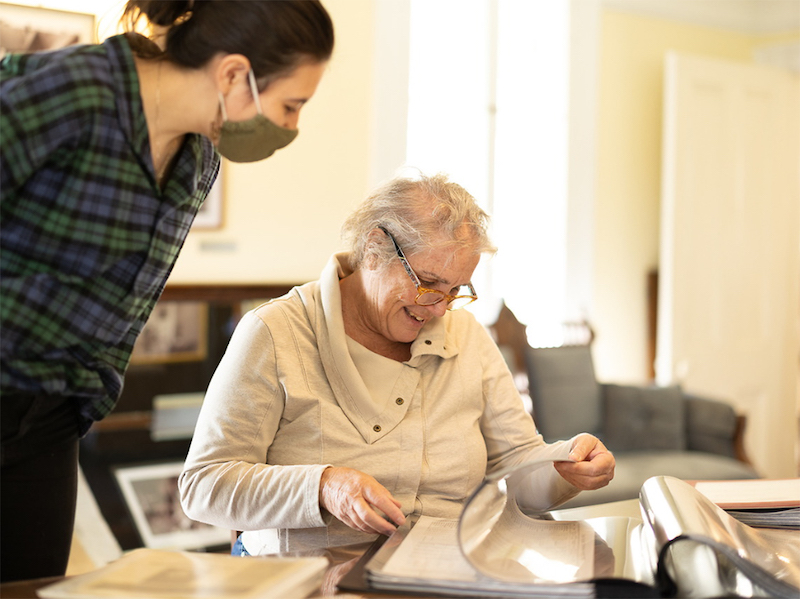Because the Kelley House is celebrating 50 years of preserving coastal history, we recently looked at the first item that was “saved” by the founders, Dorothy Bear and Beth Stebbins. The Great Register of 1894 is a reproduced copy of the official voters in Mendocino County at that time.
A potential voter provided the following information: name, age, height, color of complexion, hair color, eye color, visible marks or scars on his body (California did not grant women the right to vote until 1911), occupation, country of nativity, place or residence, and naturalization details if not born in the USA. The register is spiral bound across the top and two feet wide so all a voter’s information can be listed on one line.

Museum staff enjoying the Great Register of 1894. Photograph by Thomas Delgado.
Every line in this register has the same handwriting. This is the kind of thing that leaves historians wondering: did only one person ever make entries, OR did one person doing research at some time in the past meticulously hand letter a copy? Bless whomever it was for the legible script that allows a peek into county history.
I handpicked a few people to scrutinize. First, I chose Charles Fletcher because he was the biggest man listed. At age 65 the Navarro man was 6 feet five and one half inches tall with a light complexion, gray hair and eyes. He was a ship’s carpenter who was born at sea (to WHOM, one wonders) so he had no country of nativity. His home was located on what is now state park property at the mouth of the Navarro River.
Since I am a resident of Comptche, I next looked at the registered voters there. I found 47 men, aged 21 to 63, half of whom were farmers or ranchers; 13 were woodsmen. Nine men born in Denmark comprised the biggest ethnic group.
Going down the list of “visible scars” on the county’s voters, the disfigurements went from bad to worse. Some were minor: “left thumb amputated at first joint” or “smallpox marks on face.” Others were more serious: “left arm six inches shorter than right arm” or “partial paralysis left side.” The worst cases were “end of nose chopped off” or “left eye out—uses stone eye.” One man had a gunshot wound visible on his left wrist, another had a disfigured right ear.
The occupations fascinated me most. Over 100 different ones were listed. Along with job titles everyone would expect—farmer, rancher, woodsman, merchant—were some very unusual ones: cigar makers (Ukiah grew tobacco during and after the Civil War), railroad conductors, hostlers, brick masons, musicians, wood carvers, capitalists (no socialists), wholesale liquor distributors, hop pickers, wagon makers, plasterers, orchardists, band saw filers, sewing machine salesmen, and shingle makers.
There were also expressmen, furniture dealers, mail contractors, raftsmen, umbrella makers, stone cutters, soda works managers, insurance agents, road overseers, wallpaper hangers, ministers of the gospel, a superintendent of the water works, a justice of the peace, and a lighthouse keeper (at Point Arena).
All registers before and after tell equally interesting stories if the reader has time to delve into them. For our 50th Anniversary exhibition, “Kelley House Museum: Building a Home,” we have this 1894 register on public display for visitors to flip through, as well as older ones in our archives.
The Kelley House Museum is open from 11AM to 3PM Friday through Sunday. If you have a question for the curator, reach out to curator@kelleyhousemuseum.org to make an appointment. Walking tours of the historic district depart from the Kelley House regularly.